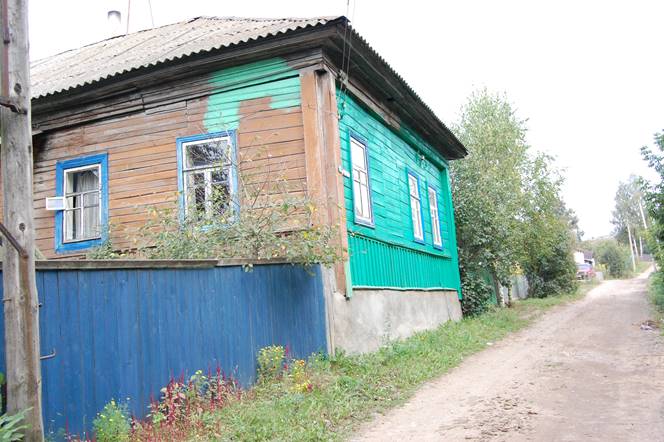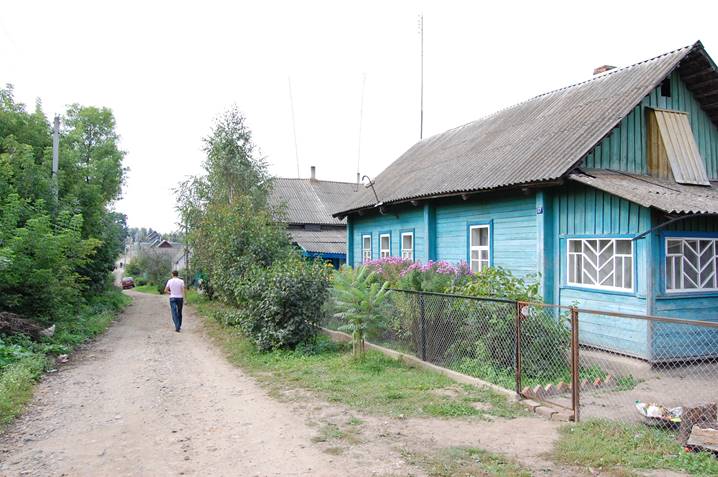

|
Interview with Nina
S.
In
2016 I hired the Jewish Heritage Research group to conduct on-site research in Dubrowna and interview local townspeople who might remember
the Jewish community there. Following is
the edited interview with Nina daughter of Kuzma S.,
born in 1929. Her family refused having
her photograph taken.
“Our family lived in a small wooden house
with a thatched roof on Mostovaya Street in Dubrowna. My father used to fix wooden carts and made
wheels for them. There were 7 children in our family and I was the eldest. We
were poor: my youngest sisters wore hand me down coats and dresses my parents
earlier bought for me. I had only 2 pairs of shoes which I wore in autumn and
winter. My mother knitted warm socks from goat hair for all of us. We had our
own vegetable garden and a few goats.
“Lots of Jews lived on out street. I
remember my Jewish friends: Tsilya SEGAL, Matlya LIVSHITS, and Beylya
DAVIDOV. We all went to the same class at school. Belarusians, Poles and Jews all
went to the same school. It was a two story wooden building located on Oktyabrskaya
Street. There were about 30 pupils in
our class and 20 of them were Jewish.
Most of the teachers were Jewish as well, though the headmaster was
Belorussian. When classes were over for
the day, we would often go to the cinema, which was located in a church. The communists closed the Jewish school in
the middle of 1930s.
“As my father used to say, after the
Revolution almost half of Dubrowna’s residents were
Jewish but they started leaving for towns and cities, that’s why the Jewish
population decreased up to 1/3.
“The Jews were educated people. Our
neighbor Yakov SEGAL spoke several foreign languages;
he was an engineer at a textile factory. All adult Jews spoke Russian and
Belorussian with a slight accent so it was easy to spot them out. A lot of
elderly Jews wore beards. They gathered together in Aron’s house (I don’t
remember his last name) on our street and sang Jewish songs; we, the children,
danced under their windows to their singing. Our family had lots of friends
among local Jewish residents. They always lent money to my mother when she
needed it.
“My father had a friend – we called him Shimenka. He was a watchmaker. He always repaired my
father’s watch for free and only asked for some goat cheese; he gave us a
wall-clock as a present for the New Year right before the war.
“A ghetto was set up in Dubrowna in the autumn of 1941. It was located on several streets where Jews
used to live. It was fenced with barbed
wire. They did not let us come near the
Jews, even when they were being escorted to work. In December 1941, local policemen along with
Nazis surrounded the ghetto and led people to the gulley next to the textile
factory in groups of fifty. Almost all
the Jews were killed that day. Only 300
workmen and their families were left alive.
They were killed in the spring of 1942, next to the first execution
place.
“When the war started several Jewish families who lived on our street evacuated to the east. I
remember the OSINSKY and KHAZANOVICH families who managed to leave. They survived and returned to Dubrowna when the war was over. They moved to Israel in the
1970s.
“By the beginning of the war all synagogues
and churches in Dubrowna were closed, but the
buildings were used for other purposes. The Communists turned the Catholic
church into a cinema, the Orthodox church was turned into a foster home, and the
synagogue was used as a vegetable storehouse. The synagogue was called “Tall”
and it was built of red bricks. The synagogue was destroyed when the Nazis left
Dubrowna in 1943.
Nowadays a kindergarten is located on that very same lot where the
synagogue used to be.
“When the war was over, only about 100
Jews were left in Dubrowna. They said, the Jews even
had a secret place to pray. Today I do not know of any Jewish families that
still live in our town.”
Below are various views of Oktyabrskaya
Street. Photos were taken during a 2016 research
trip.



Created by JP January 2019
Last updated by JP January 2019
copyright © January 2019 Judy Petersen
Email: Judy Petersen
This site is hosted at no cost by JewishGen,
Inc., the Home of Jewish Genealogy.
If you have been aided in your
research by this site and wish to further our
mission of preserving our
history for future generations, your
JewishGen-erosity
is greatly appreciated.